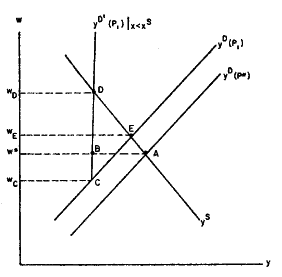| School | Troops | Resources |
The Walrasian-Keynesian Synthesis
("Disequilibrium Keynesianism", "Non-Walrasians", "Post-Walrasians")

The school has gone by a variety of names "Disequilibrium Keynesianism", "Non-Walrasian", etc., but a fair designation would be a "Walrasian-Keynesian" synthesis. It emerged in the late 1960s as a challenge to the orthodox Neo-Keynesian synthesis.
In the late 1960s, young economists dissatisfied with the conventional partition between Neoclassical micro and Keynesian macro proposed to provide "microfoundations" for the latter. More precisely, that the economy should by modeled as a general equilibrium model with macroeconomic constraints. They asserted that the essence of the J.M. Keynes's original characterization of unemployment - that firms will not hire without demand, workers will not demand without wages - should be modeled as an aggregate coordination problem, a situation of protracted disequilibrium that price flexibility could not solve.
The call for embedding Keynes's results in a Walrasian general equilibrium setting with effective demand constraints can probably be traced back to Don Patinkin (1956). But the proper birth of the Disequilibrium school is the challenges forwarded by Robert Clower (1965) and Axel Leijonhufvud (1967, 1968). The Franco-Belgian "Non-Walrasian" school of macroeconomics in 1970s further formalized the propositions and extended the approach.
| Pioneers of the Walrasian-Keynesian Synthesis
The Gallo-Belgian Non-Walrasian School
Critical Monetary Theorists
Disequilibrium Growth Models
|
HET
|
|
Resources on the Walrasian-Keynesian Synthesis
|
All rights reserved, Gonçalo L. Fonseca
